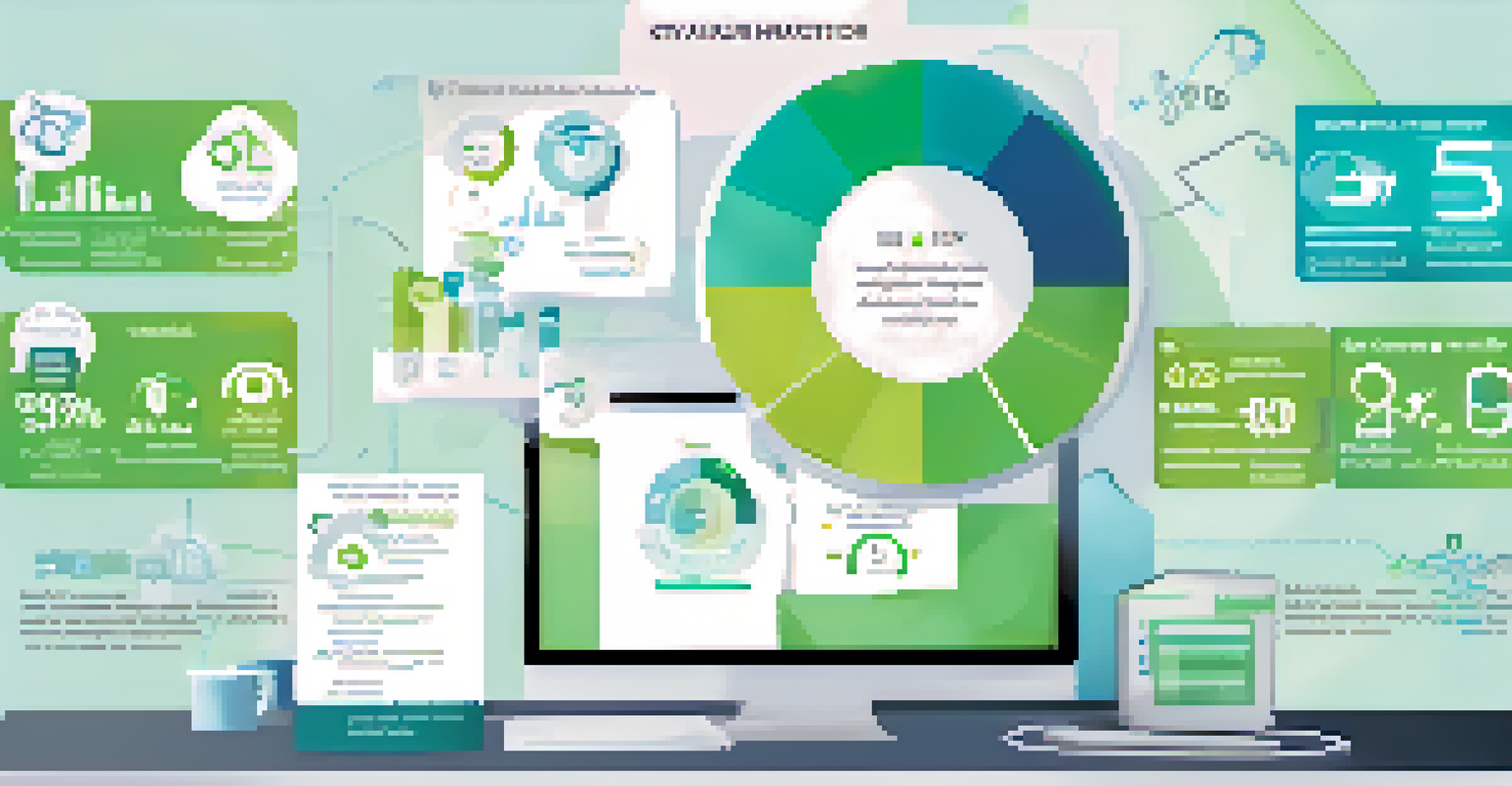Evaluating Remote Work: Measuring Success and Effectiveness

Understanding the Importance of Remote Work Evaluation
In today's digital age, many companies are embracing remote work as a viable option. Evaluating this new work style is crucial to ensure productivity and employee satisfaction. Without proper assessment, organizations may struggle to understand what works and what doesn't in a remote setting.
The only way to do great work is to love what you do.
Remote work isn't just about flexibility; it’s about maintaining effectiveness. Companies need to identify key performance indicators (KPIs) that align with their goals. These metrics not only help in measuring success but also guide future strategies for remote teams.
Ultimately, the evaluation process acts as a feedback loop, informing both employees and managers about areas of improvement. By prioritizing evaluation, organizations can create a thriving remote work culture that benefits everyone involved.
Key Performance Indicators (KPIs) for Remote Work
Choosing the right KPIs is the cornerstone of evaluating remote work success. Common KPIs include productivity rates, employee engagement, and communication efficiency. These indicators provide valuable insights into how remote teams are functioning day-to-day.

For example, tracking project completion times can reveal if employees are meeting deadlines. Additionally, employee surveys can gauge morale and engagement levels, offering a deeper understanding of team dynamics. Each KPI serves as a piece of the puzzle in the bigger picture of remote work effectiveness.
Remote Work Needs Evaluation
Evaluating remote work is essential for ensuring productivity and employee satisfaction while identifying effective strategies.
When selecting KPIs, it’s essential to align them with company objectives. This ensures that the evaluation process not only measures performance but also drives the organization toward its strategic goals.
Tools for Measuring Remote Work Productivity
In the realm of remote work, technology plays a pivotal role in measuring productivity. Various tools like time-tracking software, project management platforms, and collaboration apps can offer real-time insights into team performance. These tools transform data into actionable information that helps in decision-making.
Communication works for those who work at it.
For instance, platforms like Trello or Asana can track project progress, while tools like Toggl can monitor how much time employees spend on specific tasks. By analyzing this data, managers can identify trends, bottlenecks, and areas for improvement. It’s like having a roadmap that guides the team toward success.
However, it’s crucial to use these tools judiciously. Over-reliance on technology can lead to micromanagement, which may harm employee morale. Striking a balance between monitoring and trust is key to fostering an effective remote work environment.
Employee Engagement: A Vital Metric in Remote Work
Employee engagement is a fundamental aspect of remote work evaluation. Engaged employees are more productive, innovative, and committed to their work. Thus, measuring engagement levels can provide insights into the overall effectiveness of remote setups.
Methods to assess engagement include regular surveys, one-on-one check-ins, and virtual team-building activities. These initiatives not only gauge sentiment but also foster a sense of community among remote workers. A connected team is often a more productive team.
KPIs Drive Remote Work Success
Selecting appropriate Key Performance Indicators (KPIs) aligns evaluation processes with company objectives, enhancing overall performance.
Moreover, understanding the factors that drive engagement can help managers tailor their approaches. Whether it’s offering professional development opportunities or recognizing accomplishments, small gestures can lead to significant improvements in employee satisfaction.
The Role of Communication in Remote Work Success
Effective communication is the backbone of any successful remote team. When team members are dispersed, clear and concise communication becomes even more critical. Evaluating communication practices can help identify gaps and enhance collaboration among remote employees.
Utilizing video conferencing tools like Zoom or Slack for team meetings can keep everyone connected. Regular updates and open lines of communication foster transparency and trust, essential components of a productive remote environment. It’s like maintaining a pulse on the team’s dynamics.
Additionally, encouraging feedback and dialogue can lead to a more engaged workforce. By creating an atmosphere where employees feel heard, organizations can improve morale and productivity, ultimately leading to greater success in remote work.
Setting Clear Expectations for Remote Teams
One of the most effective ways to evaluate remote work is by setting clear expectations from the start. When employees know what is expected of them, they are more likely to meet those standards. Clear guidelines on communication, deadlines, and deliverables can help streamline processes.
For example, establishing regular check-in meetings can ensure everyone is on the same page. These meetings provide opportunities for team members to discuss progress, address challenges, and celebrate successes. It’s about creating a structured yet flexible framework for remote work.
Feedback Fuels Continuous Improvement
Establishing feedback loops allows organizations to adapt and refine remote work practices, leading to increased employee satisfaction and productivity.
Moreover, clarity in expectations helps minimize misunderstandings and fosters accountability. When everyone understands their roles and responsibilities, the entire team can work more harmoniously toward common objectives.
Feedback Loops: Continuous Improvement in Remote Work
Feedback loops are essential for fostering a culture of continuous improvement in remote work. By regularly gathering feedback from employees, organizations can identify what’s working and what needs adjustment. This iterative process is vital for adapting to the ever-evolving nature of remote work.
Conducting exit interviews, pulse surveys, and regular performance reviews can provide valuable insights. These tools allow employees to express their thoughts on the remote work experience, contributing to a more tailored approach. It’s like tuning a musical instrument for the best sound.

By acting on feedback, organizations can enhance employee satisfaction and productivity. This proactive approach not only improves current practices but also sets the stage for long-term success in remote work environments.
Looking Ahead: The Future of Remote Work Evaluation
As remote work continues to evolve, so too must our methods of evaluation. The future will likely see more sophisticated tools and metrics that provide deeper insights into employee performance and engagement. Embracing data-driven decision-making will be crucial in shaping effective remote work policies.
Moreover, organizations need to stay adaptable. Trends in remote work can shift rapidly, influenced by technology advancements and changing employee needs. Being open to change ensures that evaluation processes remain relevant and effective.
Ultimately, the goal is to create a remote work experience that is beneficial for both employees and employers. By continuously evaluating and refining strategies, organizations can build a thriving remote culture that meets the demands of the future.